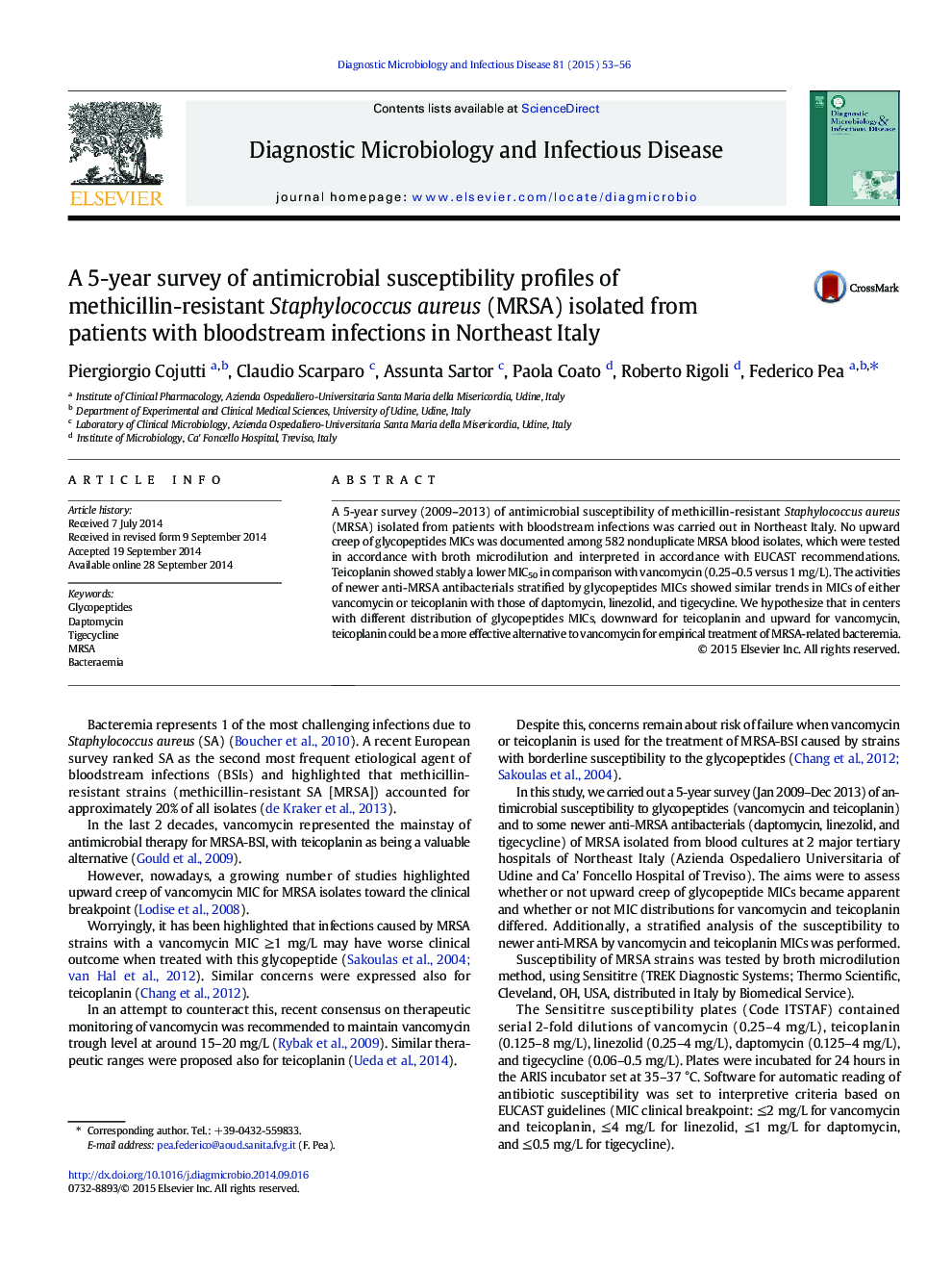| Article ID | Journal | Published Year | Pages | File Type |
|---|---|---|---|---|
| 3346958 | Diagnostic Microbiology and Infectious Disease | 2015 | 4 Pages |
•A lack of upward creep of glycopeptides MICs among 582 MRSA isolates from bacteremia over 5 years was documented.•Annual MIC50 was stably 1–2 dilutions lower for teicoplanin (0.25–0.5 mg/L) than for vancomycin (1 mg/L).•Similar correlations were observed between the trends in MICs of either vancomycin or teicoplanin with those of daptomycin, linezolid, and tigecycline.•In these settings, teicoplanin could be a more effective alternative to vancomycin for empirical treatment of MRSA-related bacteremia.
A 5-year survey (2009–2013) of antimicrobial susceptibility of methicillin-resistant Staphylococcus aureus (MRSA) isolated from patients with bloodstream infections was carried out in Northeast Italy. No upward creep of glycopeptides MICs was documented among 582 nonduplicate MRSA blood isolates, which were tested in accordance with broth microdilution and interpreted in accordance with EUCAST recommendations. Teicoplanin showed stably a lower MIC50 in comparison with vancomycin (0.25–0.5 versus 1 mg/L). The activities of newer anti-MRSA antibacterials stratified by glycopeptides MICs showed similar trends in MICs of either vancomycin or teicoplanin with those of daptomycin, linezolid, and tigecycline. We hypothesize that in centers with different distribution of glycopeptides MICs, downward for teicoplanin and upward for vancomycin, teicoplanin could be a more effective alternative to vancomycin for empirical treatment of MRSA-related bacteremia.
